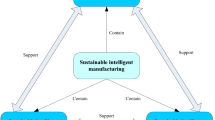This study is addressed at the thermal deformation errors resulting from temperature rise that contribute to 40%–70% of the precision errors in machining at a turning centre, and proposes an economic, accurate, and quick measurement method. It also investigates the thermal error differentials between static idle turning and in the actual cutting environment. The temperature measurement units are intelligent IC temperature sensors with correction circuits. The A/D card extracts and transforms data and saves data in the computer files, and the displacement sensor measures the displacement deviation online during cutting. The temperatures and the deviation of thermal drifts so obtained are used to establish the relationship function using multivariable linear regression and nonlinear exponential regression models, respectively. Finally, this paper compares software compensation methods for the thermal-drift relationship. As proven by experiments, the software compensation method can limit the thermal error of a turning centre to within 5 μm. Moreover, the software compensation for the thermal error relationship using a single variable nonlinear exponent regression model can reduce the error by 40% to 60%.
Similar content being viewed by others
Author information
Authors and Affiliations
Rights and permissions
About this article
Cite this article
Tseng, PC., Ho, JL. A Study of High-Precision CNC Lathe Thermal Errors and Compensation. Int J Adv Manuf Technol 19, 850–858 (2002). https://doi.org/10.1007/s001700200096
Issue Date:
DOI: https://doi.org/10.1007/s001700200096




